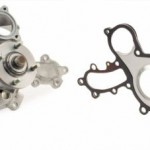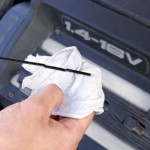Many Toyota vehicles come equipped with a distinctively pink-colored antifreeze in their radiators. While this may seem unusual compared to the traditional green variety, Toyota's pink coolant is actually designed to last much longer and offers enhanced performance. Known as a "new generation of ethylene glycol-based premium engine coolant," this fluid is specifically formulated to provide superior protection against corrosion and overheating. Unlike some other coolants, Toyota’s pink coolant is readily available through authorized dealerships. Interestingly, there’s also a red variant of Toyota coolant that doesn't get diluted with water, which sets it apart further. For more insights into radiator care, check out our latest blog post.
Steps to Properly Check Radiator Fluid Levels
Ensuring your Toyota’s radiator fluid levels are correct is critical for maintaining optimal engine performance. Here’s a detailed guide to help you do it safely:
- Ensure the Engine is Cool: Before you begin, always wait until the engine has completely cooled down. Attempting to open the radiator cap while the engine is still hot can result in scalding hot fluid spraying out, causing severe burns or damage.
- Inspect and Remove the Cap: Once the engine is cool, gently unscrew the radiator cap using slight downward pressure. A half-turn should suffice. As you do this, inspect the cap for any signs of wear, such as dents or a worn-out gasket. A damaged cap could lead to leaks or improper sealing.
- Examine the Fluid Level: Look inside the radiator to confirm the fluid level. The coolant should appear a vibrant pink color and should reach just below the top of the radiator neck. Any deviation from this—such as a darker or different color—indicates that your radiator might need flushing to remove contaminants or rust.
- Add Fluid if Necessary: If the fluid is low, carefully add more of the Toyota-approved pink coolant. Using a funnel can prevent spills and keep things tidy. Pour the fluid gradually and allow it to settle before adding more. Be cautious not to overfill the radiator, as this can cause pressure buildup. Once done, replace the radiator cap securely.
- Check the Overflow Reservoir: In addition to the radiator, inspect the overflow reservoir next. This container typically has markings indicating whether it’s too low or full. Fill it up to the "full" line, ensuring it matches the radiator’s fluid level.
- Inspect Hoses and Clamps: While you’re checking the radiator, take a moment to examine the hoses connected to it. If you notice signs of aging, such as cracks, brittleness, or rusted clamps, it’s wise to have these replaced promptly to avoid future issues.
- Inspect the Fins: Take a close look at the radiator fins. If they appear bent or crushed together, this could obstruct airflow and reduce cooling efficiency. Consider consulting a mechanic about replacing the radiator if this is the case.
- Monitor the Temperature Gauge: After completing these steps, start the engine and monitor the temperature gauge. If everything is functioning correctly, the needle should stay within the normal range, confirming your radiator is effectively cooling the engine.
It’s worth noting that Toyota recommends changing the radiator fluid every 100,000 miles under normal driving conditions. Regular maintenance is key to ensuring your Toyota remains reliable and performs optimally over the long term.
For additional tips on Toyota vehicle upkeep, explore related posts such as “When Should I Replace the Timing Belt on My Toyota?†or “Toyota Cold Weather Car Maintenance and Survival Tips.†Proper care ensures your Toyota stays in excellent condition for years to come.
Related Posts
-
 When Should I Replace The Timing Belt On My Toyota?
When Should I Replace The Timing Belt On My Toyota?
-
 Toyota Cold Weather Car Maintenance And Survival Tips
Toyota Cold Weather Car Maintenance And Survival Tips
-
 Toyota Water Pump Replacement – 16100-59275-83
Toyota Water Pump Replacement – 16100-59275-83
-
 How To Figure Out Why Your Toyota Is Overheating
How To Figure Out Why Your Toyota Is Overheating
-
 Toyota Spring Vehicle Maintenance Tips – Battery, Tires, And More
Toyota Spring Vehicle Maintenance Tips – Battery, Tires, And More
-
 Toyota Water Pump Replacement – 16100-29085
Toyota Water Pump Replacement – 16100-29085
Single Head Pipe Chamfering Machine
Single Head Pipe Chamfering Machine,Hydraulic Pipe Chamfering Machine,Pneumatic Chamfering Machine,Pipe Deburring Machine
Zhangjiagang heshun machinery manufacturer co.,ltd. , https://www.hsformer.com
 When Should I Replace The Timing Belt On My Toyota?
When Should I Replace The Timing Belt On My Toyota?
 Toyota Cold Weather Car Maintenance And Survival Tips
Toyota Cold Weather Car Maintenance And Survival Tips
 Toyota Water Pump Replacement – 16100-59275-83
Toyota Water Pump Replacement – 16100-59275-83
 How To Figure Out Why Your Toyota Is Overheating
How To Figure Out Why Your Toyota Is Overheating
 Toyota Spring Vehicle Maintenance Tips – Battery, Tires, And More
Toyota Spring Vehicle Maintenance Tips – Battery, Tires, And More
 Toyota Water Pump Replacement – 16100-29085
Toyota Water Pump Replacement – 16100-29085